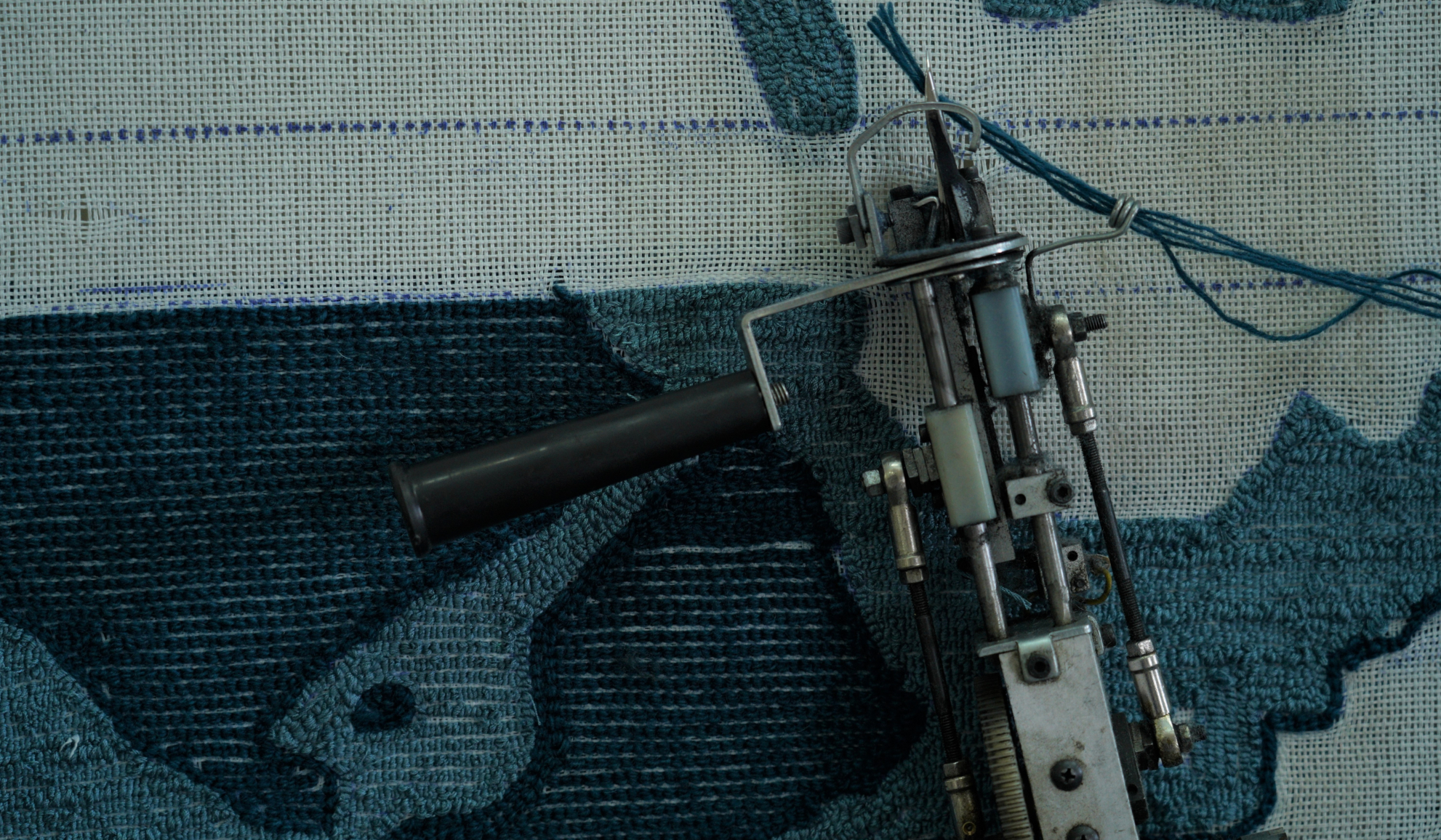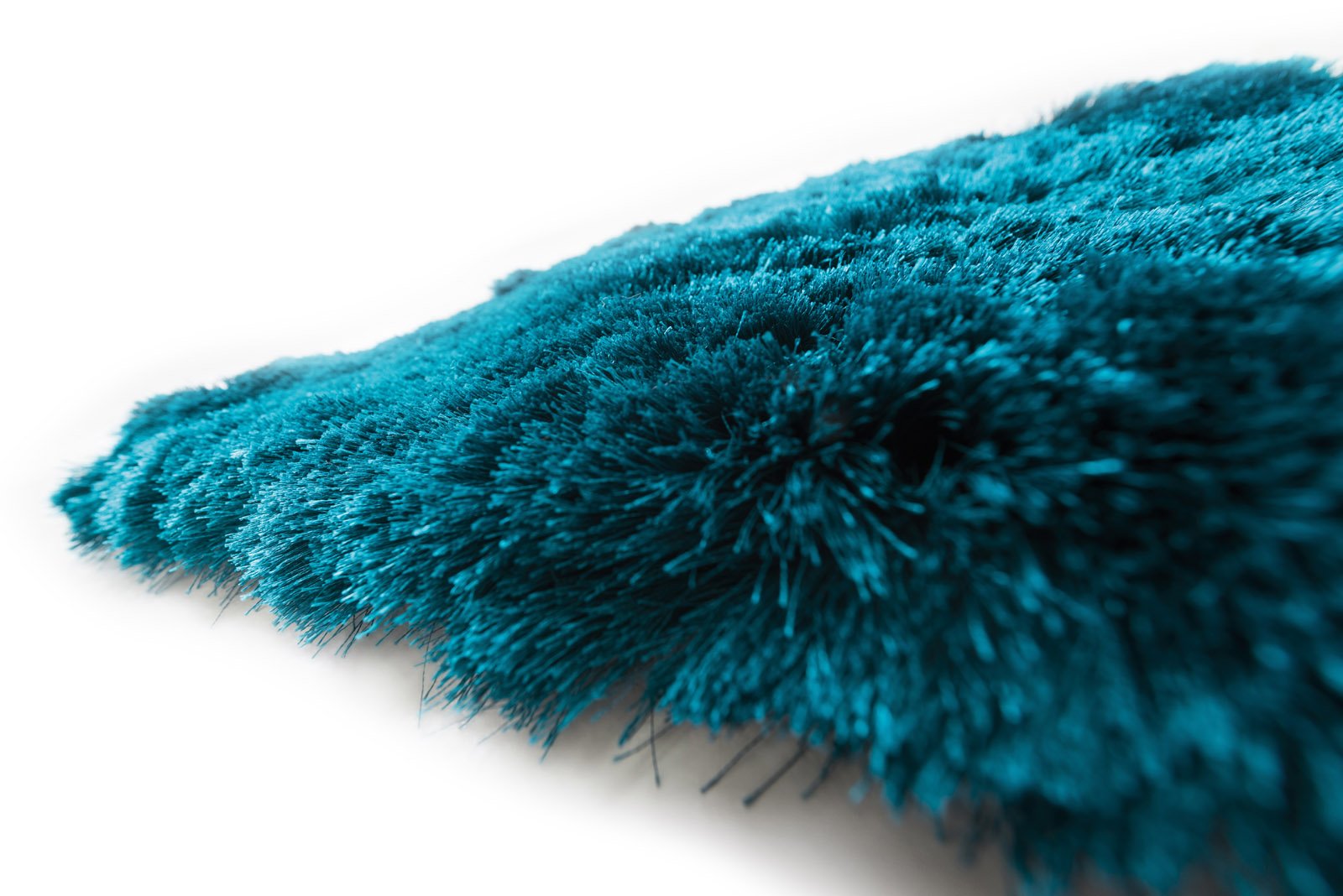TUFTING: HAND TUFTED VERSUS MACHINE MADE RUGS
The word 'tufting' denotes a process of carpet production in which threads are attached to the corresponding base fabric through needling. This process is very similar to that of a classic sewing machine.
History of the handmade unicat from its origins to its establishment as a subject of mass production
The process of tufting originates from the USA, where early settlers used this technique to produce warm clothing such as bed covers. During tufting, which requires an enormous manual labor, a voluminous and soft pile yarn is inserted on a base material with a sewing needle. This technique was consequently developed industrially to such an extent that tufting now represents one of the most important processes in the carpet production.
Tufting enables a significantly higher performance than production with a conventional loom. In industrial production many side by side arranged needles shoot the pile yarns simultaneously into the base material. This material consists either of natural fibers such as wool, fleece or jute or of synthetic fibers such as polyacrylic or polyamide.
Quality factors for tufted carpets
The backing material contributes to the overall quality of a carpet but the pile yarn is decisive in this matter. The pile inserted into the base material and then again retrieved creates small loops, which in their turn are fixed by attaching some second backing material to it.
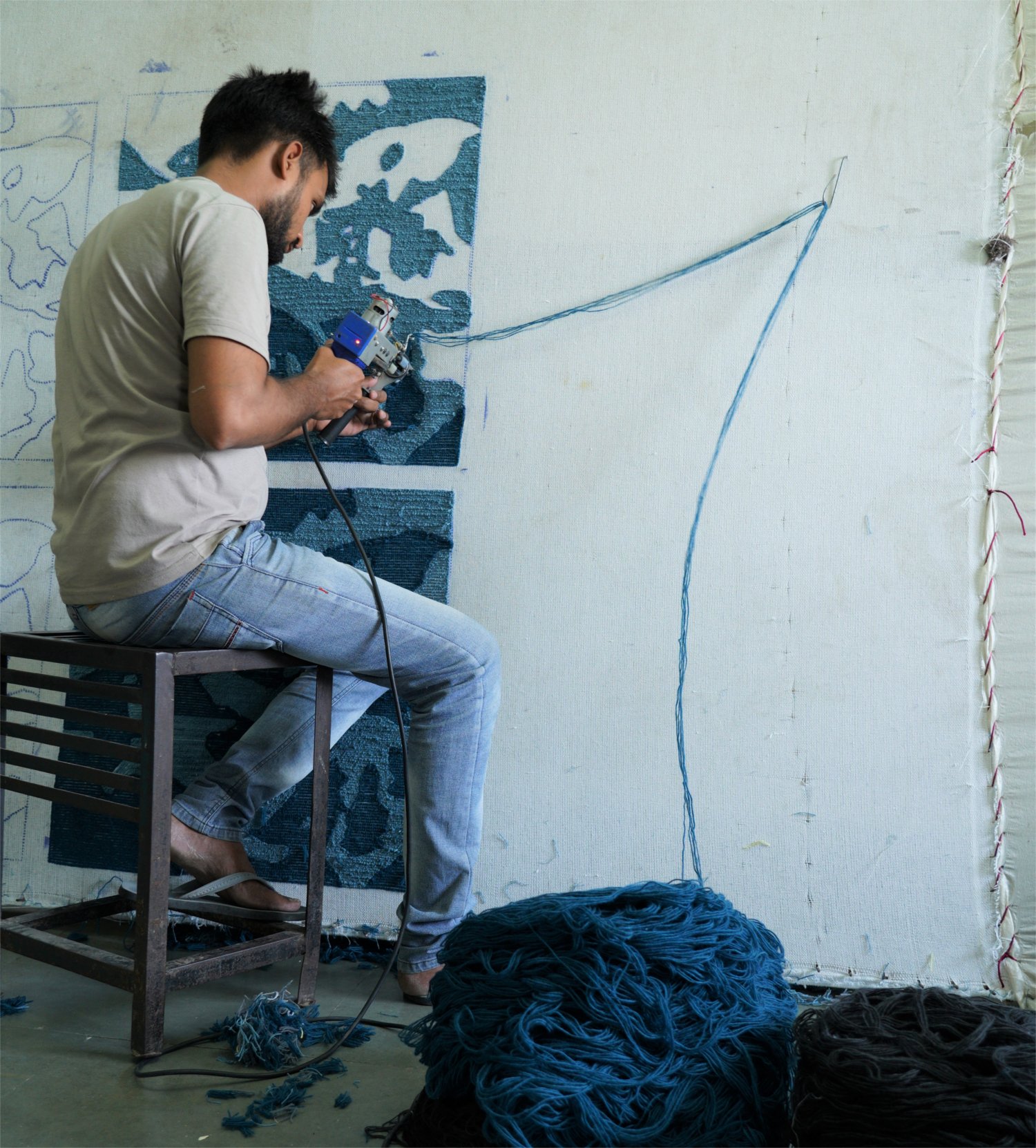
The way yarns are twisted determine the quality and also the weight of a carpet. The quality can be bettered through the process of heat setting, which implies exposure of twisted yarns to a steam atmosphere.
Different styles of tufting
It is differentiated between two types of tufting: hand tufting and machine tufting.
Hand tufting is the classic craft for making unique carpets. Carpets are processed with a so-called yarn gun, single needle machine, which attaches yarn tufts to a prefabricated base material, the first backing. This is done by needling the yarn from the back side upwards, where grabs hold the yarn. This creates loops on the front side, which are either cut immediately or opened through shearing after completing the rug.
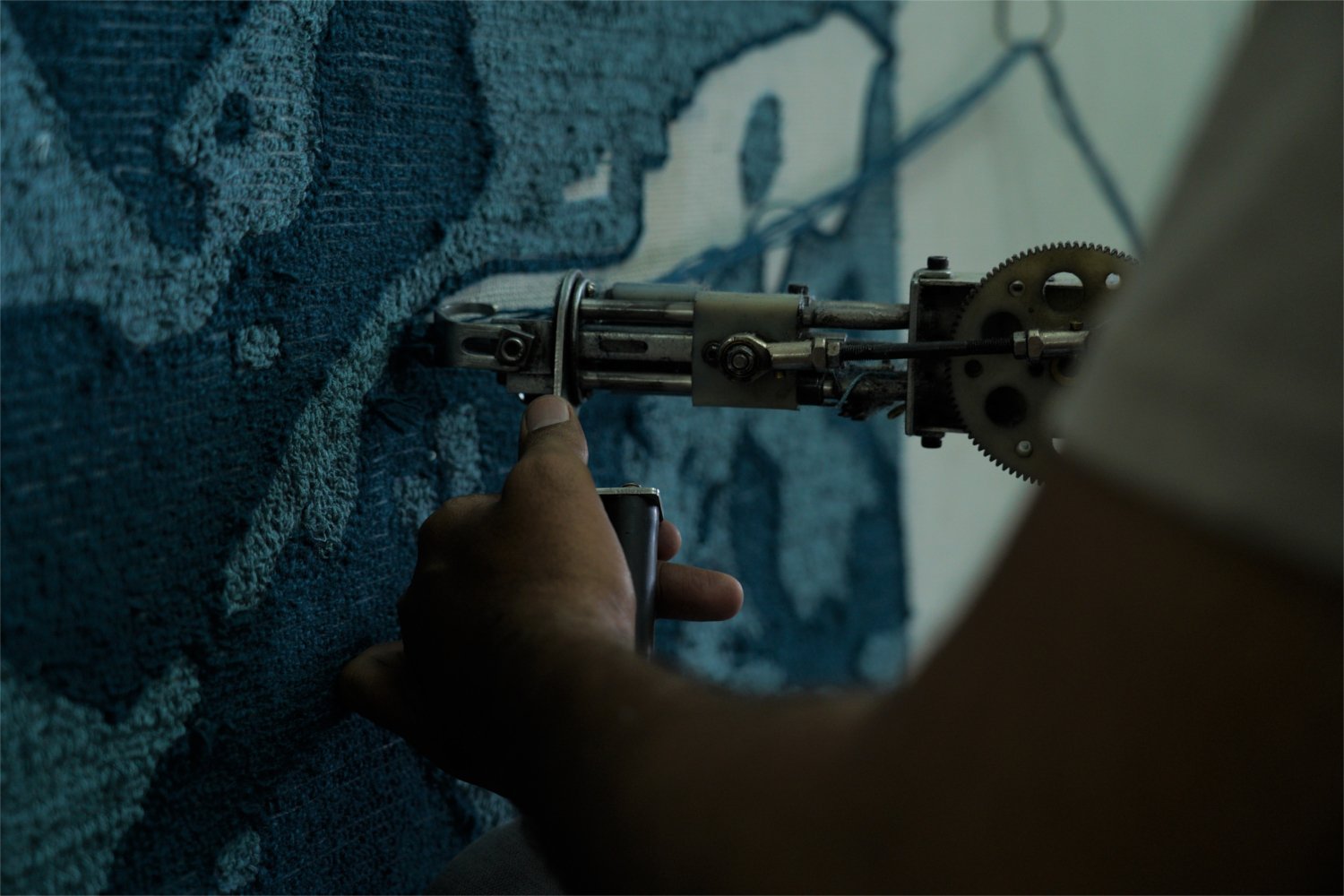
The back is covered by another layer, usually fleece, which is glued to it in order to prevent the tufted carpet pile from falling out again. In contrast to the classic woven carpet in which patterns are created by individual crosswise threads, a beautiful, custom-made and individual pattern design can be created by tufting. As a result, unique pattern variations including curves become easily available through the process.
Since hand tufted carpets can be produced in a shorter time period than woven carpets, tufted carpets are often cheaper than the latter. The more colors and details are used, the more expensive the design pieces are. Besides, hand tufting enables creation of individual pieces.
How does table tufting work?
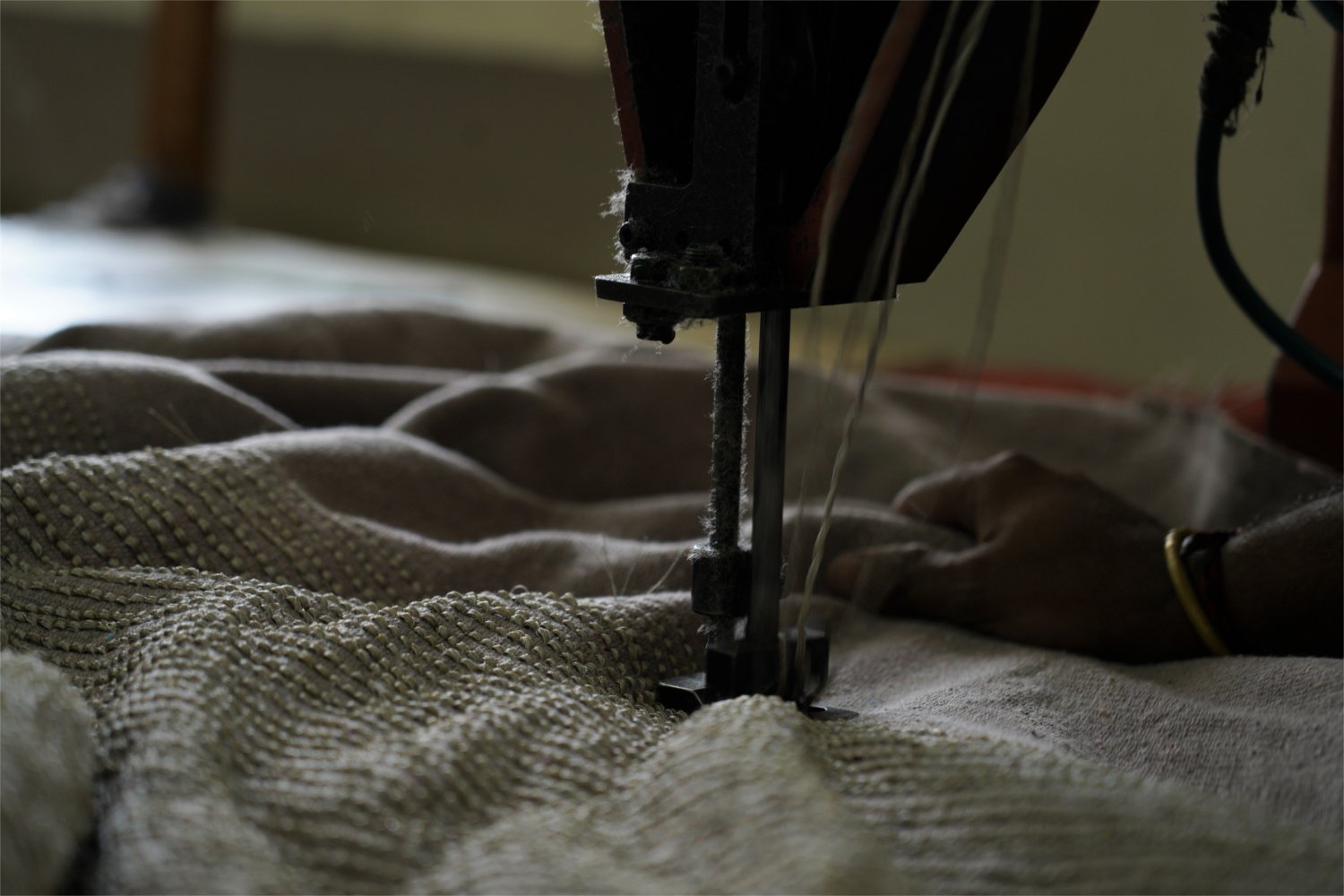
Table tufting is a type of hand tufting in which a carpet pattern is placed on a flat surface and laterally carried under the tufting machine; the latter looks very much like a large sewing machine. This type of hand tufting is ideal for producing acrylic or cotton carpets of a smaller size. For larger pieces several people are necessary, they have to push the fabric mass synchronously underneath the table tufting machine.
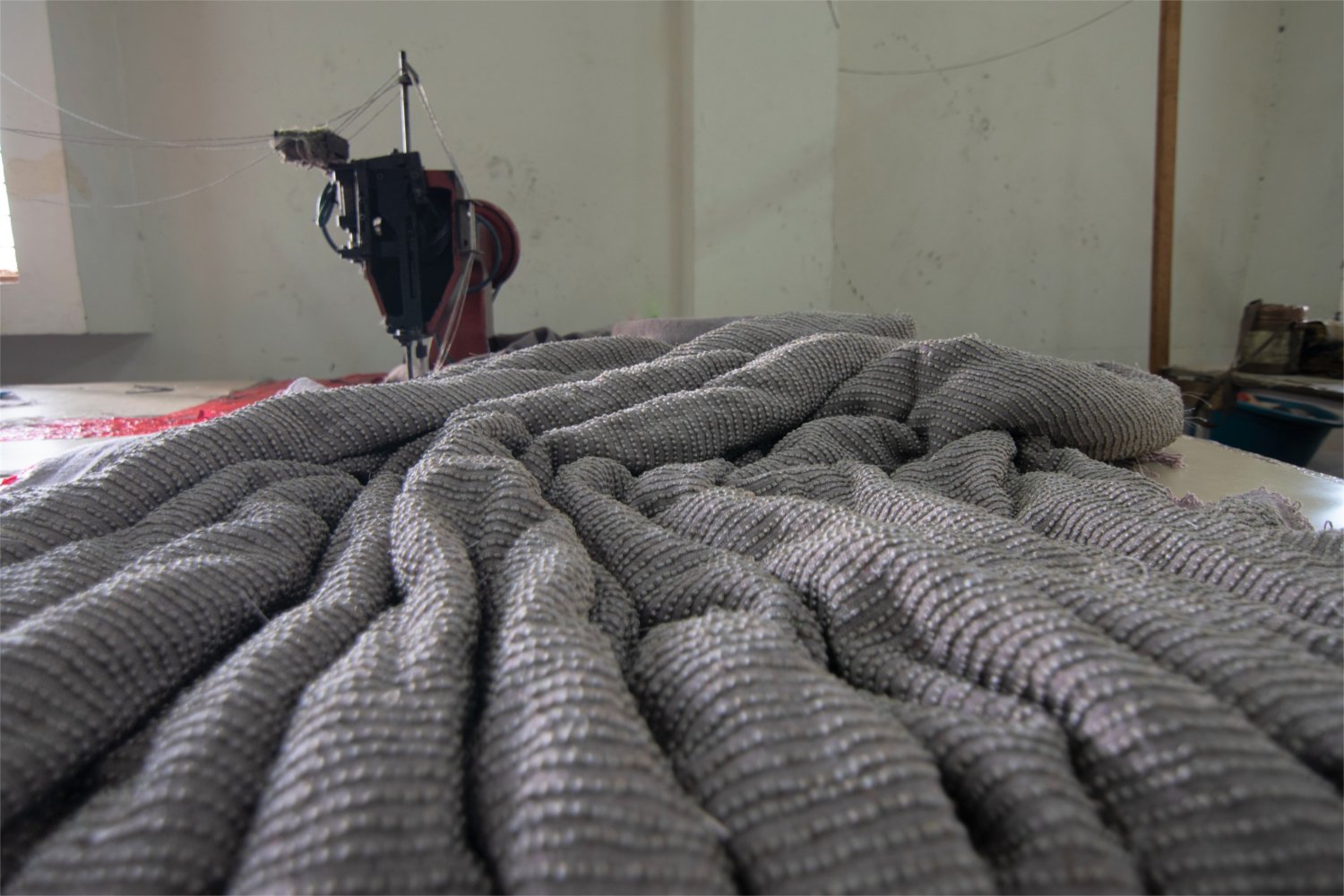
Advantages and disadvantages of the machine tufting
Machine tufting enables production of large quantities of carpets in a very short time. Due to the production technology it also enables fulfillment of customer requirements flexibly. Bathroom or fitted carpets are usually manufactured in this way. The production process is similar to that of hand tufting but in it only one color is usually tufted and afterwards printed or dyed. The result is that the pattern does not spread all over the base fabric.
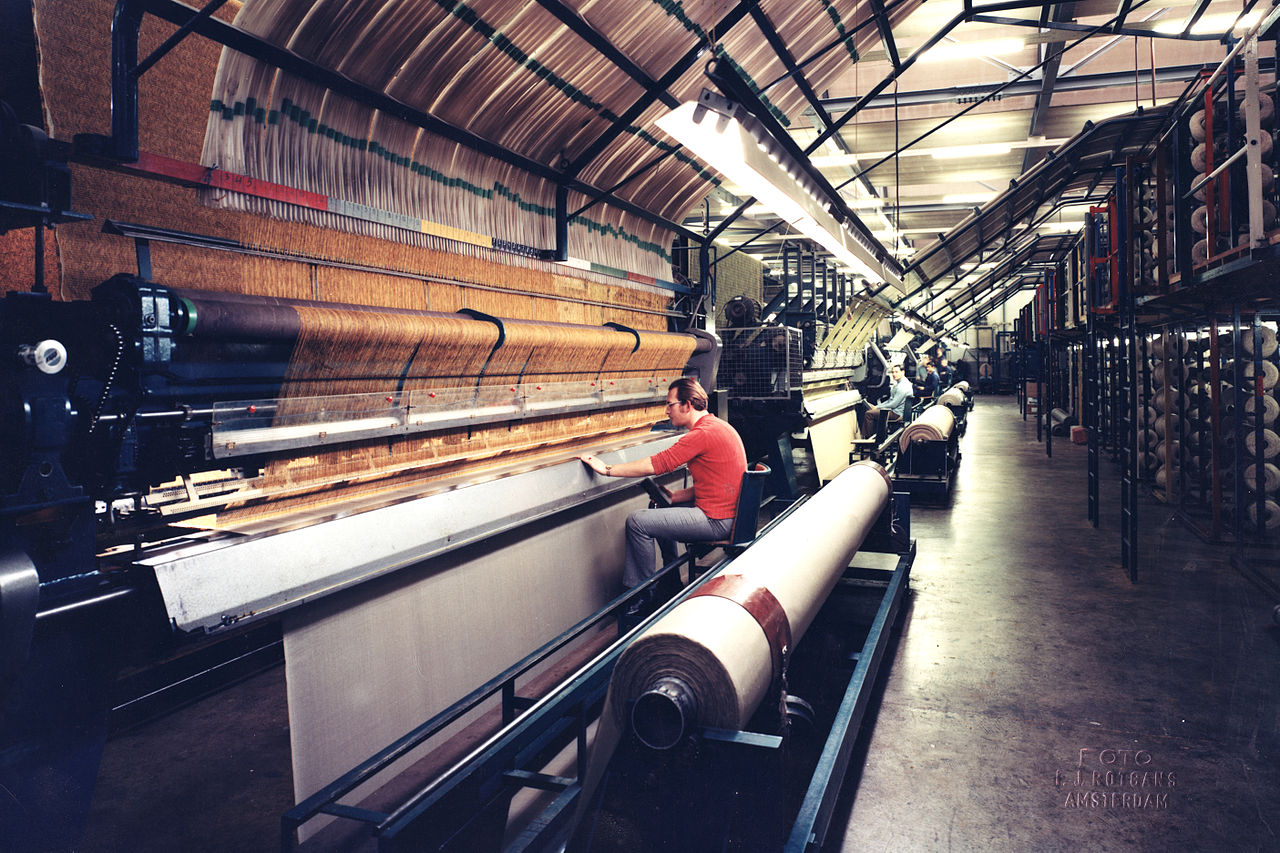
This technology makes it also possible to produce mass products with a smaller number of variations at a very reasonable price. After all, it depends on the individual case in which this or that technique best satisfies production requirements. Budget, free design, delivery period and size contribute to the decision-making whether machine or hand tufting is the most suitable choice.
Photo (6):
BM Veen / IJ Rotgans Amsterdam
- Behind the scene
- technically
- Materials
